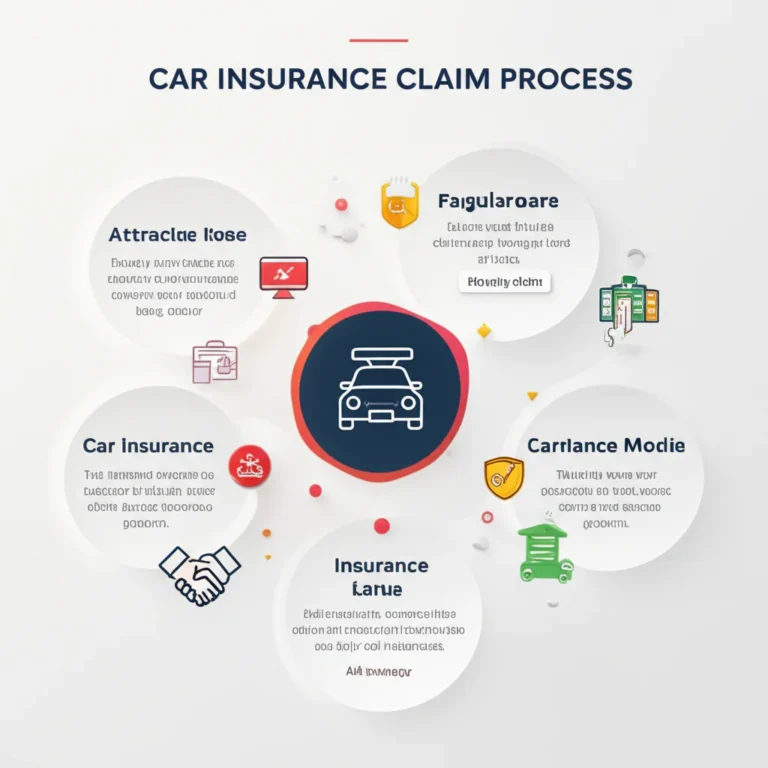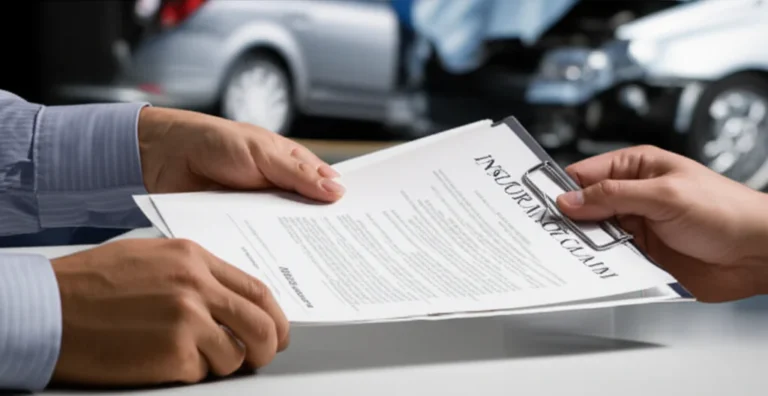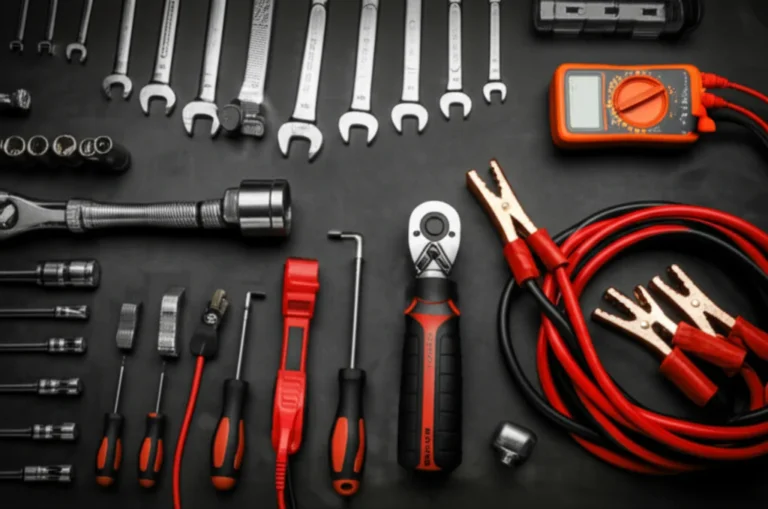Support our educational content for free when you purchase through links on our site. Learn more
What Are the Average Costs of 10 Common Car Repairs? (2025) 🚗
Ever felt that sinking feeling when your car dashboard lights up like a Christmas tree? You’re not alone! From brake pad replacements to oil changes, understanding the average costs of common car repairs can save you from nasty surprises and help you budget smarter. In this guide, we break down 10 essential repairs and maintenance tasks, revealing what you can expect to pay, why prices vary, and how to keep your wallet happy without compromising safety.
Did you know that skipping regular oil changes can lead to engine damage costing thousands? Or that brake repairs can range widely depending on your car’s make and model? Stick around as we decode these costs, share insider tips on saving money, and explain why investing in quality maintenance pays off big time. Ready to become your own car care expert? Let’s dive in!
Key Takeaways
- Brake pad replacements and oil changes are among the most common and critical repairs, with costs varying widely based on vehicle type and parts quality.
- Preventative maintenance is your best defense against costly repairs—regular oil changes and timely brake service keep your car safe and reliable.
- Labor rates, geographic location, and part choices (OEM vs. aftermarket) significantly impact repair bills.
- Building a relationship with a trusted mechanic and shopping around for quotes can save you hundreds.
- Understanding your warranty coverage helps avoid unexpected out-of-pocket expenses.
👉 Shop Common Repair Parts & Services:
- Brake Pads: AutoTrader | Edmunds | Bosch Official
- Oil Changes: TrueCar | Pep Boys | Mobil 1
Table of Contents
- ⚡️ Quick Tips and Facts
- 🛣️ The Ever-Changing Road: A Brief History of Car Repair Costs
- 💰 Decoding Your Dashboard: Average Costs of Common Car Repairs
- Brake Service: Pads, Rotors, and Beyond
- Oil Changes: The Lifeblood of Your Engine
- Tire Care: Rotations, Balances, and Replacements
- Battery Blues: When to Replace Your Power Source
- Spark Plugs and Ignition Systems: Keeping the Spark Alive
- Fluid Flushes: Transmission, Coolant, and More
- Belt Replacements: Serpentine, Timing, and V-Belts
- Filter Frenzy: Air, Cabin, and Fuel Filters
- Suspension & Steering: Smooth Rides and Sharp Turns
- Check Engine Light: Diagnostics and Common Fixes
- 🧐 What Drives Your Repair Bill? Unpacking the Factors That Affect Car Repair Costs
- 💸 Smart Strategies: How to Save Money on Car Maintenance and Repairs
- 🛡️ Beyond the Bill: The Importance of Investing in Quality Car Maintenance
- 📝 Navigating the Fine Print: Warranty Considerations and Your Repair Costs
- ❓ Conclusion
- 🔗 Recommended Links
- 🙋♀️ FAQ
- 📚 Reference Links
Alright, buckle up, buttercups! The team at Car Brands™ is about to take you on a wild ride through the world of wrenches, grease, and… well, your wallet. We’ve all been there: a weird noise starts, a strange light pops on, and your stomach drops faster than a supercar’s 0-60 time. The big question looms: “How much is this going to hurt?” Understanding the average costs of common car repairs is the first step to taking control of your automotive destiny. Let’s pop the hood on what you can expect.
⚡️ Quick Tips and Facts
Before we dive deep, here’s the cheat sheet. The stuff you can read while waiting for your coffee to brew:
- Oil Changes are Your Best Friend: A routine oil change is one of the cheapest and most effective ways to prevent catastrophic engine failure. Think of it as a spa day for your engine.
- Brakes Aren’t a “Maybe Later” Job: Worn brake pads are a massive safety risk. The cost to replace them is a fraction of the cost of an accident.
- Location, Location, Location: Where you live dramatically impacts repair costs. Labor rates in California are going to be a different beast than in Mississippi.
- DIY Can Save a Bundle: Simple jobs like changing an engine air filter are often easy to do yourself and can save you money on labor.
- OEM vs. Aftermarket: Original Equipment Manufacturer (OEM) parts are made by your car’s brand, while aftermarket parts are made by third parties. Aftermarket is often cheaper, but quality can vary.
- Preventative Maintenance is Key: “Paying for quality maintenance now can save you from costly repairs in the future.” It’s the golden rule of car ownership.
🛣️ The Ever-Changing Road: A Brief History of Car Repair Costs
Ever wonder if your grandpa really paid just a few bucks for a tune-up? He probably did! But cars back then were glorified tractors compared to today’s “rolling computers.”
Here’s the deal: as vehicles have become infinitely more complex, so have their repairs. The rise of electronic systems, advanced safety features, and specialized materials means your friendly neighborhood mechanic needs more than just a good set of wrenches. They need sophisticated diagnostic equipment and ongoing training.
Add in a dash of inflation, supply chain hiccups, and a shortage of skilled technicians, and you’ve got the perfect recipe for rising costs. So, while it’s fun to reminisce about the good old days, comparing repair costs from then to now is like comparing a flip phone to the latest smartphone. They both make calls, but the technology inside is worlds apart.
💰 Decoding Your Dashboard: Average Costs of Common Car Repairs
Okay, let’s get to the nitty-gritty. That flashing light on your dash is mocking you, and you want to know what you’re in for. While we can’t give you an exact quote (every car and situation is different!), we can arm you with a solid ballpark figure for the most common jobs.
| Repair/Service | Average Cost Range (per axle for brakes) | Why It’s Important |
|---|---|---|
| Oil Change | Low to Moderate | Engine lubrication, cooling, and cleaning. |
| Brake Pad Replacement | Moderate | Essential for safe stopping. |
| Tire Rotation | Low | Promotes even tire wear, extending tire life. |
| Battery Replacement | Moderate | Powers all your car’s electronics and starts the engine. |
| Engine Air Filter | Low | Prevents debris from entering the engine. |
| Full Brake Job (Pads & Rotors) | Moderate to High | Restores full braking performance. |
Brake Service: Pads, Rotors, and Beyond
That squealing sound when you hit the brakes? That’s your car’s not-so-subtle way of screaming for help. Ignoring it is a bad, bad idea.
- Brake Pad Replacement: This is the most common brake service. The pads are the friction material that clamps down on the rotor to stop the car. Expect this to run you anywhere from $150 to over $300 per axle. The cost depends heavily on your vehicle and the type of pads (ceramic pads, for instance, are pricier but often last longer).
- Brake Pad and Rotor Replacement: If you’ve let those pads go for too long, they can damage the rotors (the metal discs they squeeze). Replacing both is more expensive, often in the $250 to $500 range per axle. A full brake job on all four wheels can easily climb higher.
The fantastic #featured-video, “Cost for Replacing Brake Pads” by BuyBrakes.com, embedded above offers a great 2-minute overview on how to find brake pad costs for almost any vehicle. It’s a helpful resource to get a more specific idea for your ride.
Oil Changes: The Lifeblood of Your Engine
We can’t say it enough: regular oil changes are the single most important piece of preventative maintenance you can perform. Oil lubricates moving parts, helps cool the engine, and removes harmful deposits.
- Conventional Oil: This is the old-school, standard option. A basic oil and filter change will typically be in the $35 to $75 range.
- Synthetic Oil: This lab-engineered oil offers better performance and longevity. It’s more expensive, often costing between $65 and $125, but you can go longer between changes.
Many modern cars, especially those from brands like BMW or Audi, require synthetic oil. Check your owner’s manual! Skipping oil changes can lead to engine damage that costs thousands to repair.
Tire Care: Rotations, Balances, and Replacements
Your tires are the only part of your car that actually touches the road. Treat them well!
- Tire Rotation: This simple service involves moving your tires to different positions to ensure they wear evenly. It’s a low-cost service, often in the $20 to $50 range, and sometimes it’s even thrown in for free with an oil change. Regular rotations every 5,000 to 7,500 miles can significantly extend the life of your tires.
- Tire Replacement: Eventually, you’ll need new rubber. The cost for a new set of four tires can vary wildly based on your vehicle and tire choice, from a few hundred dollars for a compact car to well over a thousand for a performance vehicle or large SUV.
Battery Blues: When to Replace Your Power Source
That slow, groaning start on a cold morning? That’s your battery crying for mercy. Car batteries typically last 3-5 years. A replacement usually falls in the $100 to $200 range, but high-performance or specialized batteries for luxury vehicles can be more.
Spark Plugs and Ignition Systems: Keeping the Spark Alive
Spark plugs create the spark that ignites the fuel-air mixture in your engine. When they wear out, you can experience poor fuel economy and sluggish performance. Replacement costs vary, but it’s a maintenance item that pays for itself in fuel savings.
Fluid Flushes: Transmission, Coolant, and More
Your car has more fluids than just oil! Transmission fluid, coolant (antifreeze), and brake fluid all degrade over time and need to be replaced. A transmission fluid change, for example, is crucial for smooth shifting and can cost between $100 and $250.
Belt Replacements: Serpentine, Timing, and V-Belts
Your engine uses rubber belts to power various components. The serpentine belt runs things like the alternator and power steering pump, while the timing belt is critical for engine timing. A broken timing belt can destroy an engine, making its replacement (often a higher-cost job) a crucial preventative measure at recommended intervals.
Filter Frenzy: Air, Cabin, and Fuel Filters
- Engine Air Filter: Keeps dirt out of your engine. Replacing it is a cheap and often easy DIY job.
- Cabin Air Filter: Keeps dust and pollen out of the air you breathe inside the car.
- Fuel Filter: Ensures clean fuel reaches your engine.
Suspension & Steering: Smooth Rides and Sharp Turns
Feeling every single bump in the road? Your shocks or struts might be worn out. These repairs can be more costly but are vital for both comfort and safety, affecting how your car handles and brakes.
Check Engine Light: Diagnostics and Common Fixes
Ah, the dreaded check engine light. This could mean anything from a loose gas cap to a major engine problem. The first step is a diagnostic check, where a mechanic reads the error code. This service itself usually has a fee, which is often waived if you have the shop perform the repair. Common culprits include faulty oxygen sensors or mass airflow sensors.
🧐 What Drives Your Repair Bill? Unpacking the Factors That Affect Car Repair Costs
Ever gotten a repair quote and thought, “Why so much?!” Several key factors are at play, and understanding them can help you make sense of the estimate.
Vehicle Make, Model, and Age: The Brand Factor
This is a big one. A brake job on a Honda Civic will almost always be cheaper than on a Mercedes-Benz S-Class. Why?
- Parts Cost: Luxury and performance brands use more complex, high-end components that simply cost more.
- Labor Complexity: That Mercedes might require specialized tools or more time to disassemble, driving up labor charges.
- Availability: Parts for common cars like a Nissan Rogue are widely available and affordable, whereas parts for a rare or older vehicle might be harder to find and pricier.
Generally, brands known for reliability, like many in our Car Brand Lists, tend to have more reasonable long-term maintenance costs. An older, high-mileage vehicle will also naturally require more frequent repairs.
Parts Quality: OEM, Aftermarket, and Remanufactured Options
When a part needs replacing, you often have a choice. This decision can significantly impact your bill.
| Part Type | Description | Pros ✅ | Cons ❌ |
|---|---|---|---|
| OEM | Original Equipment Manufacturer. Made by your car’s brand. | Perfect fit, assured quality, warranty-backed. | Most expensive option, limited availability at times. |
| Aftermarket | Made by a third-party company. | More affordable, wide variety and availability. | Quality can be inconsistent, may not have a warranty. |
| Remanufactured | A used part that has been rebuilt to OEM specs. | Cheaper than new OEM, often good quality. | Quality depends on the rebuilder. |
For critical components like sensors or for collision repairs, we at Car Brands™ almost always recommend sticking with OEM parts. For less critical items like brake pads or filters, a high-quality aftermarket brand can be a great way to save money.
Labor Rates: Dealership vs. Independent Shops vs. Mobile Mechanics
Who you choose to do the work matters. A lot.
- Dealerships: They have factory-trained technicians and use OEM parts. This expertise comes at a premium, and they typically have the highest labor rates.
- Independent Shops: A good local mechanic can be your best friend. Their labor rates are often significantly lower than dealerships, and many build long-term relationships with customers.
- Mobile Mechanics: A growing option where the mechanic comes to you. They have lower overhead and can be very competitive on price for many common repairs.
Geographic Location: Regional Cost Variations
Just as a gallon of milk costs more in some cities, so does car repair. Labor rates are heavily influenced by the local cost of living. Expect to pay more in major metropolitan areas on the coasts than you would in a smaller town in the Midwest.
The Severity of the Issue: Minor Fixes vs. Major Overhauls
This one’s pretty straightforward. Replacing a fuse is a minor expense. Rebuilding a transmission is a major financial event. The more complex and time-consuming the job, the higher the cost for both parts and labor.
💸 Smart Strategies: How to Save Money on Car Maintenance and Repairs
Feeling a little light in the wallet? Don’t worry, we’ve got your back. You don’t have to be a master mechanic to keep your repair costs in check. A little bit of savvy goes a long way.
The Power of Preventative Maintenance: An Ounce of Prevention…
This is the #1 rule. Sticking to your vehicle’s recommended maintenance schedule is the best way to avoid massive, unexpected repair bills. As one source wisely puts it, “Changing your oil regularly helps avoid engine damage that could cost thousands to repair.” Think of it as an investment, not an expense.
DIY Delights: When to Grab Your Wrench (and When Not To!)
Feeling handy? You can save a ton on labor costs by tackling simple jobs yourself.
- ✅ Great DIY Projects: Changing the engine air filter, replacing windshield wipers, checking and topping off fluids, and even changing your own oil if you have the tools and space.
- ❌ Leave to the Pros: Anything involving the transmission, major engine work, suspension, or safety systems like airbags and brakes (unless you are very experienced). A botched DIY brake job isn’t worth the risk.
Shopping Around: Getting Quotes and Comparing Services
Don’t just go to the first shop you find. Get at least two or three quotes for any significant repair. When comparing, make sure you’re looking at apples to apples: Are they quoting OEM or aftermarket parts? Is there a warranty on the work? The cheapest option isn’t always the best.
Understanding Your Warranty: Maximizing Coverage
Is your car still under warranty? Don’t forget to use it!
- Manufacturer’s Warranty: This covers defects for a certain period. Using an authorized service center is often required to keep it valid.
- Extended Warranty: These can be a good investment for older cars, potentially saving you from huge repair bills. Read the fine print carefully to understand what is and isn’t covered.
Building a Relationship with a Trusted Mechanic
Finding a good, honest independent mechanic is like finding gold. When you build a relationship, they get to know your car and are more likely to give you fair prices and honest advice. It’s a long-term strategy that pays off.
🛡️ Beyond the Bill: The Importance of Investing in Quality Car Maintenance
We get it, shelling out cash for car repairs is never fun. But looking beyond the immediate cost reveals why quality maintenance is one of the smartest things you can do.
Safety First: Protecting Yourself and Your Passengers
This is non-negotiable. Properly maintained brakes, tires, and suspension systems are critical for your safety. Skimping on these areas to save a few bucks is a gamble you should never take. A well-maintained car is a safer car, period.
Extending Your Vehicle’s Lifespan: Driving for the Long Haul
Want to join the 200,000-mile club? Regular maintenance is your ticket in. By keeping up with fluid changes, belt replacements, and other routine services, you prevent small issues from snowballing into major, vehicle-ending problems. You’re not just fixing your car for today; you’re ensuring it has a tomorrow.
Maintaining Resale Value: A Smart Investment
One day, you’ll likely sell or trade in your car. A thick folder of service records showing a history of quality maintenance is a huge selling point. It tells a potential buyer that the car was cared for, which can significantly boost its resale value. That money you spent on oil changes and tune-ups? You’ll get a good chunk of it back.
📝 Navigating the Fine Print: Warranty Considerations and Your Repair Costs
Warranties can be a lifesaver, but they can also be a source of confusion. Let’s clear the air.
- “Wear and Tear” Items: Things like brake pads, tires, and oil filters are considered consumable parts that are expected to wear out. These are almost never covered by any warranty.
- Manufacturer’s Warranty: This is your first line of defense on a new car. It covers the cost of repairs for parts that fail due to a manufacturing defect. To keep this warranty intact, you may need to have your vehicle serviced at a dealership or authorized center, though you can’t be legally required to.
- Extended Warranties/Service Contracts: These are optional plans you can buy to cover repairs after the manufacturer’s warranty expires. They can be a great safety net, especially on complex, modern vehicles where a single electronic module failure can be incredibly expensive. Always read the contract carefully to see what’s covered, what the deductible is, and where you can have the vehicle serviced.
Using your warranty effectively means understanding its limits. Don’t assume everything is covered. When in doubt, call the warranty provider before authorizing any repairs.
❓ Conclusion
So, what have we learned on this journey through the maze of car repair costs? First off, knowledge is power. Understanding the average costs of common repairs like brake pad replacements and oil changes helps you avoid sticker shock and empowers you to make smarter decisions. We’ve seen how factors like your vehicle’s make, model, location, and the quality of parts can all influence the final bill.
Remember: regular preventative maintenance is your secret weapon. It’s like flossing your teeth—annoying but saves you from painful consequences down the road. Skipping oil changes or ignoring brake squeals might save you a few bucks today, but it can cost you thousands tomorrow.
We also uncovered the importance of choosing the right service provider—whether that’s a trusted independent mechanic, a dealership, or even a mobile mechanic—and how building a relationship with your mechanic can pay dividends in honesty and savings.
Finally, warranties can be a double-edged sword. Use them wisely, but don’t expect them to cover wear-and-tear items like brake pads or tires. Read the fine print, and always confirm coverage before authorizing repairs.
So, next time your dashboard lights up like a Christmas tree, you’ll be ready to decode the costs, ask the right questions, and keep your ride safe and sound without breaking the bank. 🚗💨
🔗 Recommended Links
Ready to shop for parts or schedule your next service? Check out these trusted platforms to find the best deals and certified services:
- Brake Pads:
- Oil Change Services:
- Car Batteries:
- Tires:
- Spark Plugs:
🙋♀️ FAQ
How much does it typically cost to replace brake pads?
Brake pad replacement usually ranges between $150 and $300 per axle, depending on your vehicle and the type of pads used. Luxury or performance vehicles tend to be on the higher end due to more expensive parts and labor. If rotors also need replacing, expect the cost to increase significantly.
Read more about “7 Most Common Car Repairs After Certain Mileages (2025) 🚗”
What is the average price for an oil change at a mechanic?
An oil change typically costs between $35 and $75 for conventional oil and $65 to $125 for synthetic oil. Prices vary based on oil type, vehicle requirements, and location. Synthetic oil changes, while pricier, allow for longer intervals between changes, potentially saving money in the long run.
Read more about “How to Find 12 Reliable Mechanics for Your Car Repairs (2025) 🔧”
Are brake pad replacements more expensive for certain car models?
✅ Yes! Luxury and performance models like BMW, Audi, or Mercedes-Benz often have higher brake pad replacement costs due to specialized parts and labor. Conversely, common models like Honda Civic or Nissan Rogue usually have more affordable brake service.
Read more about “Top 10 Best Car Brands for Reliability in 2025 🚗🔧”
How often should you get an oil change to avoid costly repairs?
Most manufacturers recommend oil changes every 3,000 to 7,500 miles, depending on the oil type and driving conditions. Synthetic oils allow for longer intervals. Always check your owner’s manual or consult a trusted mechanic to tailor the schedule to your vehicle.
Read more about “15 Essential Car Repairs You Must Know in 2025 🚗”
What are the common signs that indicate you need brake repairs?
Look out for:
- Squealing or grinding noises when braking
- A soft or spongy brake pedal
- Longer stopping distances
- Vibrations or pulsations in the brake pedal or steering wheel
Ignoring these signs can lead to dangerous situations and more expensive repairs.
Can DIY oil changes save money compared to professional services?
✅ Absolutely! Doing your own oil change can save you the labor cost, which is often half or more of the total price. However, you need the right tools, proper disposal methods for used oil, and a clean workspace. If you’re unsure, professional service is safer and more convenient.
What factors influence the cost of common car repairs like brake replacement?
Several factors affect repair costs:
- Vehicle make, model, and age
- Quality and type of parts (OEM vs. aftermarket)
- Labor rates in your area
- Severity of the repair
- Whether the work is done at a dealership, independent shop, or mobile mechanic
📚 Reference Links
- Average Cost of Car Maintenance in Wilson, NC – HV Auto
- Common Prices on Nissan Repairs [2025] | Regal Nissan
- RepairPal – Nissan Reliability and Maintenance Costs
- Edmunds – Brake Pad Replacement Cost Guide
- AAA – How Often Should You Change Your Oil?
- Bosch Automotive Parts
- Mobil 1 Synthetic Oil
For more insights on car repairs and maintenance, visit our Car Repairs category and explore Car Brand Comparisons for detailed brand-specific repair cost analyses.








